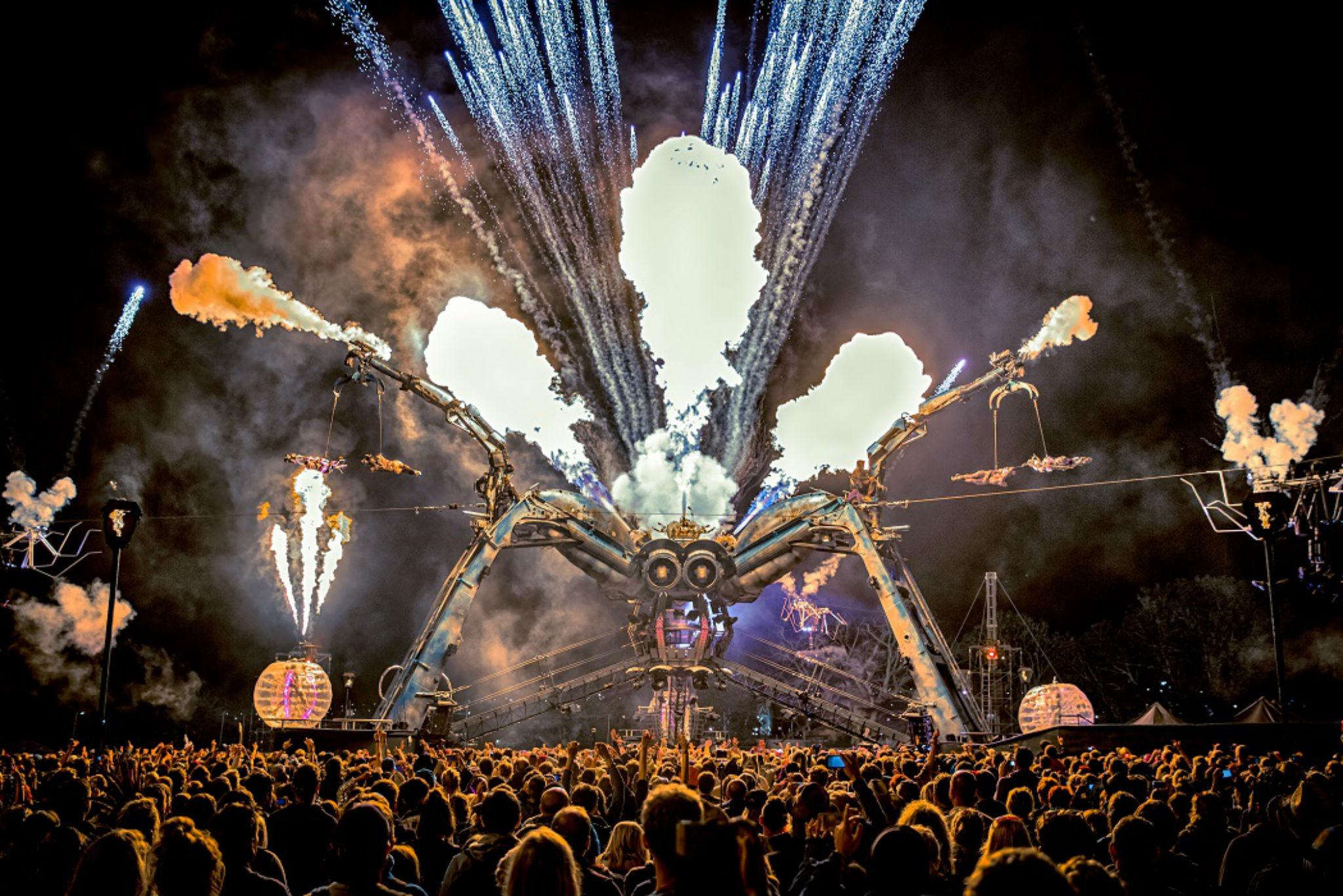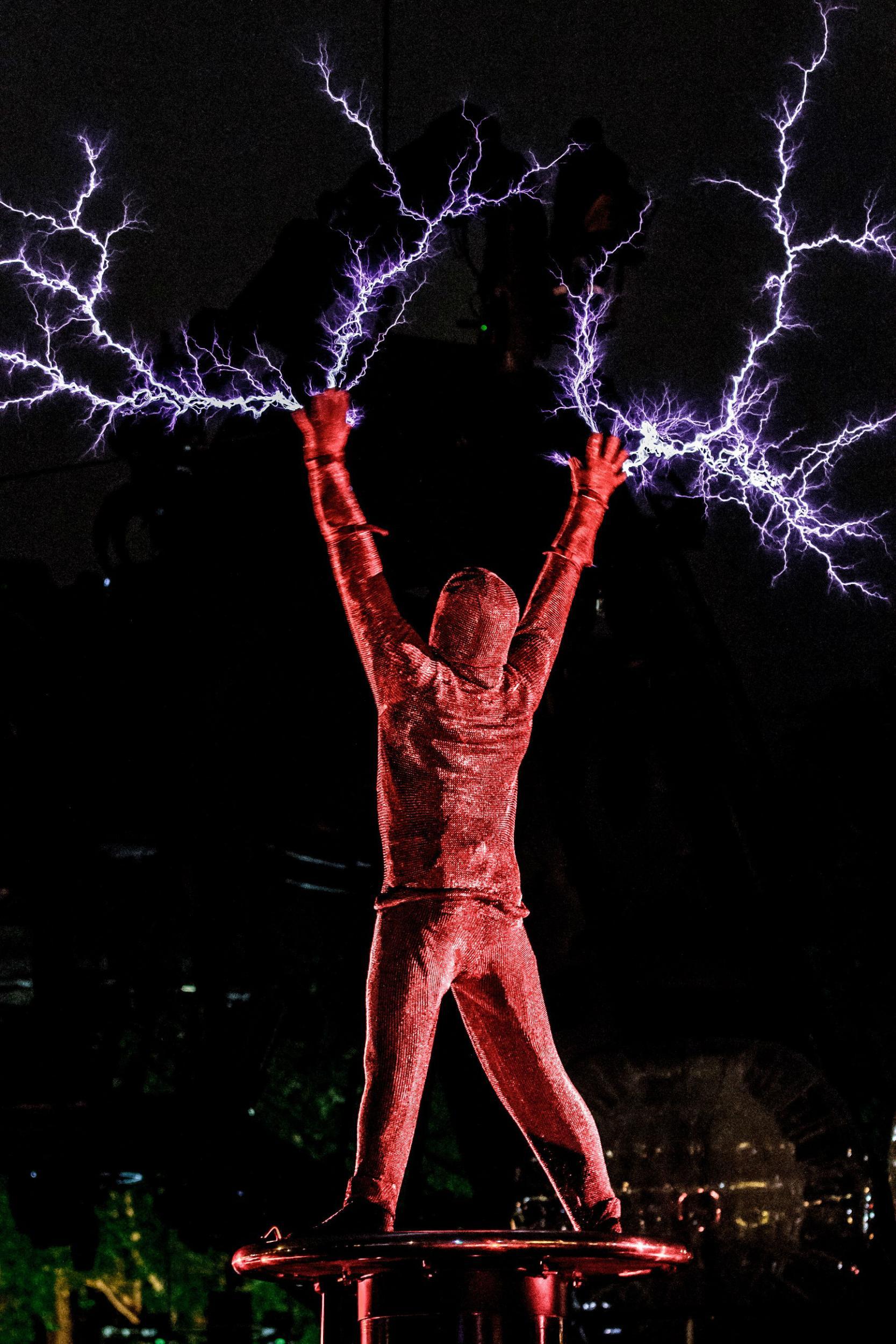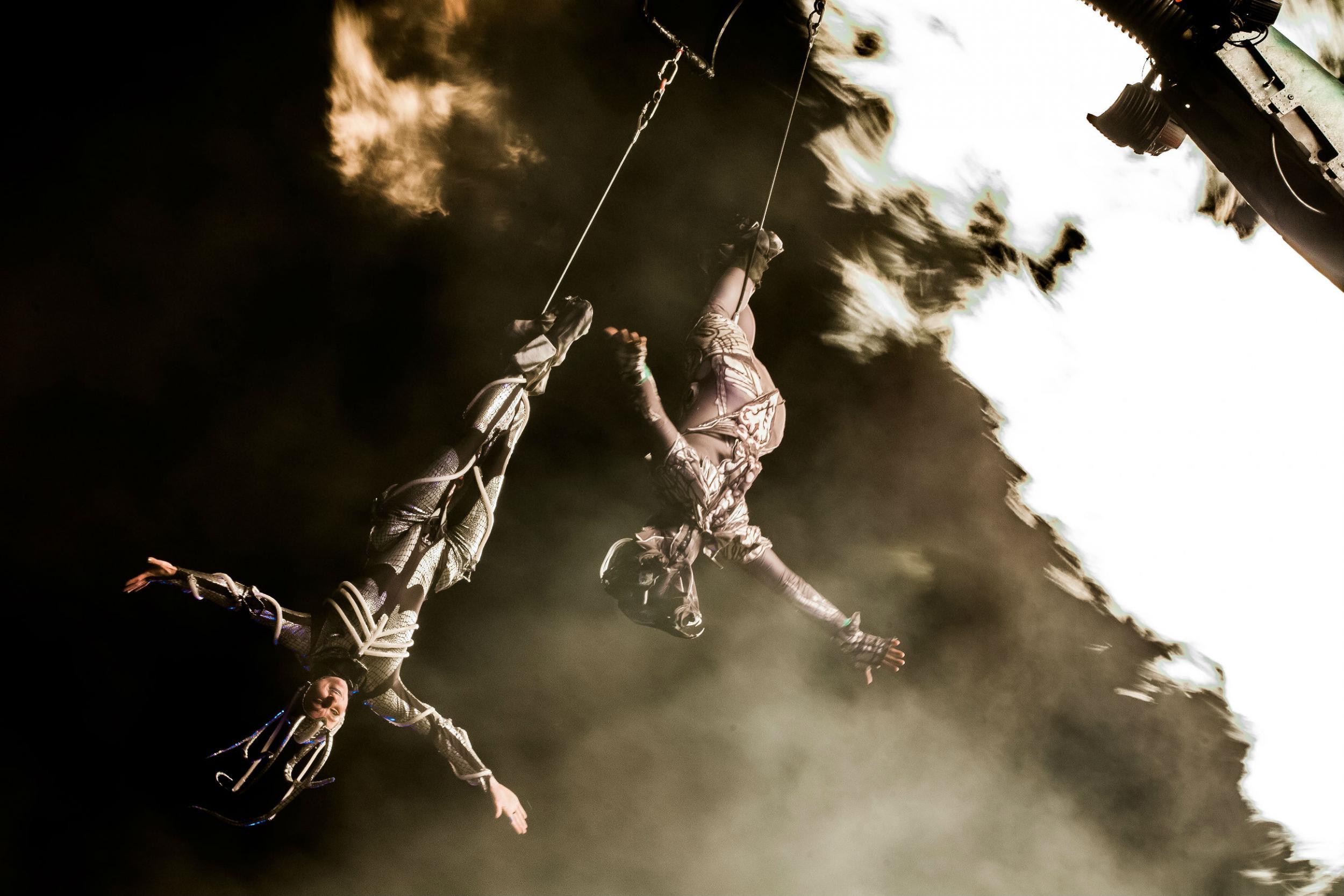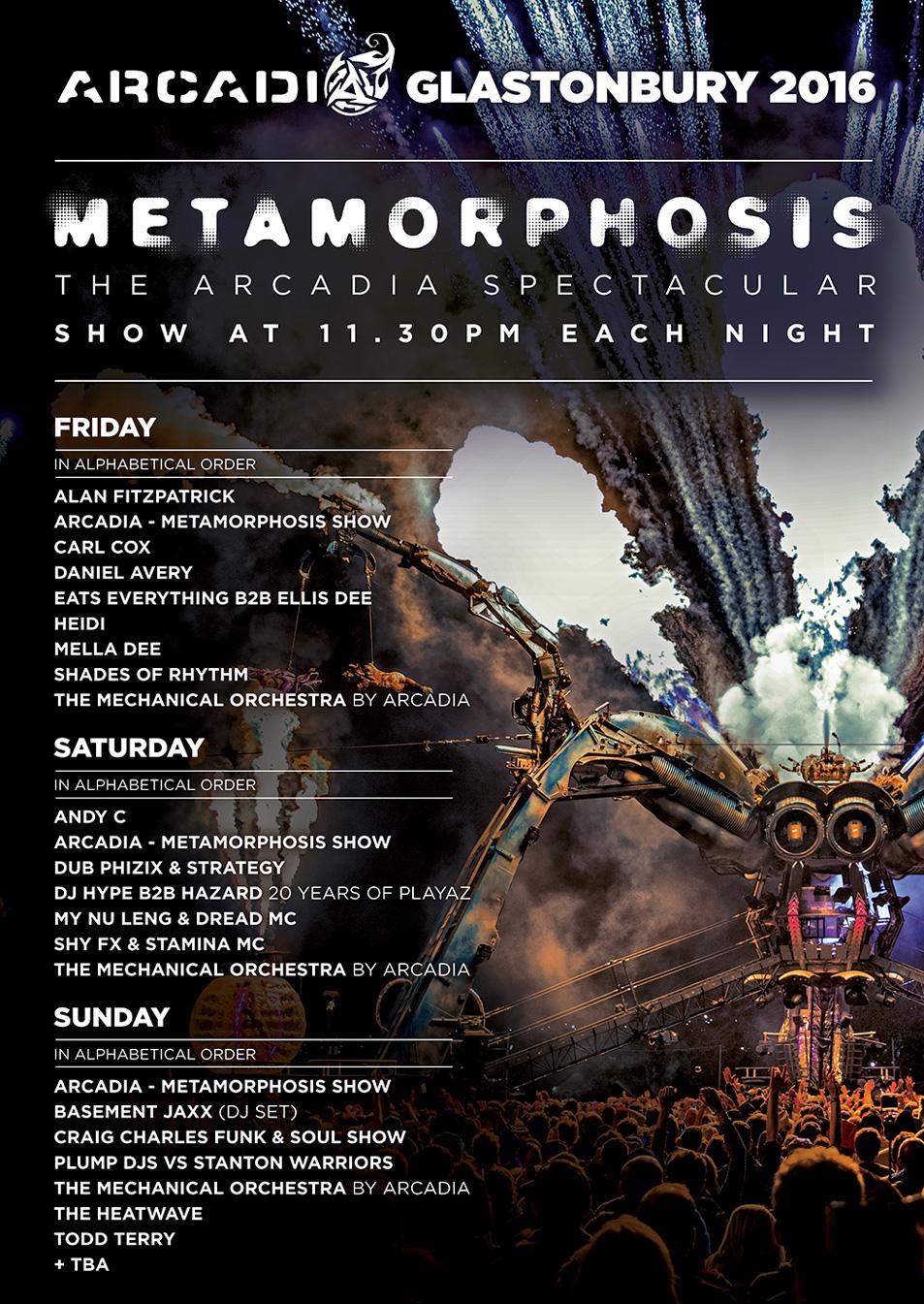Glastonbury 2016: Meet the creators of Arcadia as they prepare to bring mayhem to Worthy Farm
Pip Rush and Bert Cole drop hints on what festival-goers can expect from this year's immersive DJ spectacular and take us back to the Dorset cowshed where it all began

Your support helps us to tell the story
From reproductive rights to climate change to Big Tech, The Independent is on the ground when the story is developing. Whether it's investigating the financials of Elon Musk's pro-Trump PAC or producing our latest documentary, 'The A Word', which shines a light on the American women fighting for reproductive rights, we know how important it is to parse out the facts from the messaging.
At such a critical moment in US history, we need reporters on the ground. Your donation allows us to keep sending journalists to speak to both sides of the story.
The Independent is trusted by Americans across the entire political spectrum. And unlike many other quality news outlets, we choose not to lock Americans out of our reporting and analysis with paywalls. We believe quality journalism should be available to everyone, paid for by those who can afford it.
Your support makes all the difference.Glastonbury isn’t all mud, hippies and mass sing-alongs. Far from the fun abruptly ending once the headliners leave the Pyramid Stage, Worthy Farm comes alive at night as the DJs keep the party going until sunrise. Back for another raucous extravaganza this summer is immersive spectacular Arcadia, better known as “the Spider” to many festival-goers.
Built in Bristol by Pip Rush and Bert Cole and born at Glastonbury in 2007, Arcadia is the frantically beating heart of Michael Eavis’s annual shebang, where ravers go to storm the dancefloor as DJs spin sets amid dramatic pyrotechnics, awe-inspiring circus acts, cutting-edge technology and all-consuming sensory mayhem.
This year, the Metamorphosis show will return to give fans another otherworldly experimental experience. Here’s what Pip and Bert had to say about their plans ahead of Arcadia pitching camp on the farm:
How did Arcadia first come about - did one of you have a particularly crazy dream?
The initial spark came from a chat between Bert and I at a festival. We both felt that while there was a great spectrum of incredible music out there, there didn’t seem to be much that creatively engaged the other senses at the main stages, or social design that pushed passed the traditional linearity of thousands of people all facing the same direction. We wanted to experiment with shaping spaces and making the crowd part of the performance, rather than just observers.
Your first project together was Afterburner.
Yes, we built it in a cowshed in Dorset with very limited resources. It was designed as a 360-degree space with layered platforms and three distinct semi-circles within the overall ring. So you had one big community of people all facing each other, then three smaller communities within that at different heights. To be honest, we meant it as a social chill-out space, but before we knew it 5,000 people were dancing all around and on top of it. From that game-changing moment, we opened up to more and more input from a huge range of people, talents and disciplines and those collaborations became the driving force of our evolution. The next step was to add an aerial performance dimension, and as momentum grew, we began developing a trilogy of more theatrical performance shows, the most recent of which is Metamorphosis, with a third in the pipeline.
You recycle industrial materials to make your giant structures. Have you always been interested in recycling and the rave scene?
Both of us grew up immersed in festival culture. Bert learned engineering skills at a very early age and I developed sculptural experience with my family throughout my youth. We both used scrap a lot; it was an accessible resource and there was a real sense of adventure using materials that had a story in another life. We loved the idea of transforming things and seeing where a new piece could take you creatively: if you buy everything to fit a pre-planned design that’s fine, but letting a vision be shaped by the materials you find is really exciting. We wouldn’t have ended up with a Spider otherwise.
Presumably you’re heavily inspired by the Mutoid Waste Company [founded by Pip’s brother Joe Rush] from the Eighties and Nineties. How have you gone beyond what they were doing then?
I was in nappies when my older brother Joe started Mutoid Waste and I grew up working with them. We’ve always felt incredibly lucky that the battles fought by the punk and rave scenes broke down so many barriers and opened so many doors. In the past 30 years, cultural attitudes have been redefined and the idea of thousands of people gathering in a field to celebrate is no longer seen as alien. With norms shifting and acceptance growing, it meant we could focus on creatively evolving rather than a perpetual fight for our rights. I think Isaac Newton said it perfectly: we’re “standing on the shoulders of giants”.
Is there a political message in using ex-military scrap metal?
We try not to get too preachy within our work, but repurposing materials that were originally designed for destructive ends into creative installations that bring joy and unity does underpin a lot of what we do.
What did Glastonbury founder Michael Eavis say when you first showed him your conceptual drawing for Arcadia 10 years ago?
Something about farming and cows. Then just as our confusion peaked, he smiled and gave us a cheque.

What is it about Arcadia that draws Glastonbury-goers year after year? Pyrotechnics exploding from a gigantic metal spider doesn’t exactly fit with the hippy image many still hold of the festival.
We’d like to think it’s the energy, spirit and community on the dancefloor. That’s what it’s always been about, both at Glastonbury and for us. Ultimately, massive spiders and 50ft flames are conduits to harness and amplify those core elements. We’ve always seen our arena and our pyrotechnics as a modern interpretation of the primal concept of gathering around a campfire to celebrate. The fire’s just got a bit bigger! We’ve also changed the bulk of our flame system to use recycled bio fuels (old chip fat) and obviously the structure is 99 per cent recycled, so I guess we’re all hippies at heart!
The community element seems very important to you. Is that what you think festivals should be about, above big names on a line-up?
Absolutely. It runs through everything we do and it starts with our crew. We have farmers, scientists, welders, aerialists, engineers, scrap merchants, technicians and sculptors, to name just a few. By bringing together a crew from all those backgrounds and joining with a DJ or live performers, we hope to create something greater than the sum of its parts, and then a crowd of thousands bring everything to life. When all those diverse people unite in celebration, that’s when the magic happens!
Metamorphosis is back again this year. What daring new things are you trying out this time?
The shows get tighter and better with every outing. In addition to Metamorphosis we’ve been working on an experimental band called The Mechanical Orchestra that fuses classical, rock and electronic elements, and of course brings a few unexpected surprises into the traditional band format. We can’t give away much more than that, so you’ll have to come and see it! The pyrotechnics are particularly spectacular.
How are those designed and do you have anything especially exciting to wow us with this summer?
We have even bigger gas fireballs for the most “epic” moments, while the recycled biofuel flame system means we can hugely reduce gas consumption and bring a completely different dimension to the pyrotechnics. We’ve been working towards uniting the two and this year it’ll happen for the first time.

Arcadia travelled to Bangkok earlier this year. How do events in other countries inspire and influence your future events?
Geographical and cultural context is massively important as it’s what keeps Arcadia evolving. From setting the Spider against futuristic skyscrapers in Bangkok to palm-strewn waterfronts in Miami, each city brings out something new in the experience. Then you have the cultural aspect: how people come together and celebrate, how they interact with our shows and how the jam between us and the crowd unfolds. We have a series of international autumn dates to announce soon – that will take things up another gear as we work with traditional artists and performers to weave their own forms of expression into the show. We’re also talking at length with a tribal elder from across the globe about an ancient dance based performance invovling a spider that shares many similarities with our show and ethos. We can’t say much more until it’s announced, but we’re very excited about the collaboration.
There are some awesome DJs lined up for Glastonbury. What do you look for in an act and how do you go about choosing them?
We book all our own acts at Glastonbury and the criteria is pretty simple: anyone who can create a really special atmosphere. We’re also working closely with Ill Audio, Bam Bam and Far Too Loud on The Mechanical Orchestra.

How about the circus acts – how do they get chosen and is there anyone really amazing this year?
Moving to Bristol was key. There is such a vibrant circus community there and we worked with some incredible people to hone our own team of performers that we work with throughout the year.
How do you get the festival health and safety teams on board? Have you ever been banned from bringing a cool plan to life?
No we haven’t. Time and again we bring ideas to the health and safety teams that they haven’t come across before, but we work with our own internal specialists in advance to build in multiple fail safes and a bulletproof set of protocols. So when we do go to get something signed off, no matter how ridiculous it might look, we have the concerns covered and they are a real pleasure to work with.
Immersive experiences are becoming more popular across the arts, from music to theatre. Do you think they are necessary now to keep people interested and excited? It’s arguably harder to shock and surprise nowadays.
I think that it’s less about trying to chase that next big shock, than really thinking about how to engage people on multiple levels. It’s certainly true that there is far more emphasis on ‘immersion’ than there was when we started, but I think that’s because holistic experiences have to trigger multiple senses, people’s own imagination and the sense of being part of something that’s bigger than them – a feeling we’re always looking for ourselves. It’s been an honour to ride that wave of evolution and innovation over the last few years and we can’t wait to see where the festival world goes next. The creativity levels are extraordinary and it’s always a pleasure to see new boundaries pushed.
Glastonbury runs from 22-26 June
Join our commenting forum
Join thought-provoking conversations, follow other Independent readers and see their replies
Comments